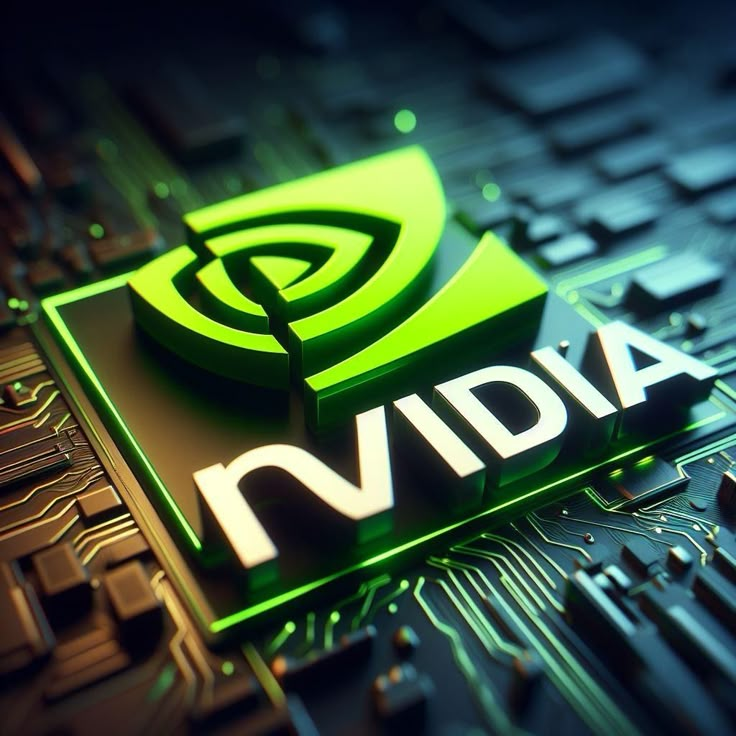NVIDIA’s AI Revolution: Powering the Future of Technology”
Introduction to NVIDIA and Its Role in AI
Founded in 1993 by Jensen Huang, Chris Malachowski, and Curtis Priem, NVIDIA has evolved from a company focused on graphics processing units (GPUs) for gaming to a global leader in AI computing. Originally known for revolutionizing computer graphics, NVIDIA’s invention of the GPU in 1999 laid the foundation for its dominance in AI.
Driven by the computational power of GPUs, the company’s strategic pivot to AI has established it as a cornerstone of the modern technological landscape. Today, NVIDIA is synonymous with the AI revolution, driving advancements in industries such as healthcare, automotive, gaming, and data centers, and defining how technology shapes the future.
The Foundation: GPUs and CUDA
The core of NVIDIA’s AI revolution is its GPU technology, which was initially designed to provide high-quality graphics in video games. Unlike traditional central processing units (CPUs), GPUs excel at parallel processing, performing many calculations simultaneously. This ability makes them ideal for the complex calculations required in AI, especially for training deep learning models.
In 2007, NVIDIA introduced CUDA (Compute Unified Device Architecture), a parallel computing platform that allowed developers to harness the potential of GPUs for general-purpose computing. CUDA simplified GPU programming, allowing researchers to accelerate AI model development. This innovation proved to be a turning point, as it made GPUs accessible to AI tasks, fueling breakthroughs like the 2012 AlexNet model, which demonstrated unprecedented image recognition accuracy and accelerated the deep learning revolution.
AI Factories and Infrastructure
NVIDIA CEO Jensen Huang has described the current era as the “next industrial revolution,” with AI factories—specialized data centers designed for AI training and inference—at the center of it. These AI factories process huge datasets to train models like ChatGPT, Google Gemini, and other generative AI systems. NVIDIA’s H100 and A100 GPUs, with the new Black well architecture, are the mainstays of these facilities. The H100 Tensor Core GPU, for example, is optimized for deep learning, delivering unmatched performance for tasks like natural language processing and computer vision.
In fiscal year 2025, NVIDIA’s data center revenue reached $115.2 billion, double that of the previous year, and this was made possible by the demand for these chips from cloud providers like Microsoft Azure, Amazon, and Google. NVIDIA’s NVLink and InfiniBand technologies further improve AI infrastructure by enabling high-speed communication between GPUs and other processors.
The recent introduction of NVLink Fusion, allowing integration with third-party CPUs and Asics expands NVIDIA’s ecosystem and ensures that its GPUs remain at the heart of AI computing, even in semi-custom infrastructure. This strategic move further solidifies NVIDIA’s dominance, as it accounts for an estimated 98% of the AI server GPU market and 92% of all GPUs globally.
Software Ecosystem and Developer Support
NVIDIA’s dominance extends beyond hardware to its robust software ecosystem. Libraries such as Conn, Transport, and frameworks integrated with PyTorch and TensorFlow simplify AI development. The NVIDIA AI Enterprise Suite and NIM (NVIDIA Inference Microservices) enable businesses to efficiently deploy AI models, reducing costs and improving scalability. The open-source Cosmos platform, combined with Omniverse, allows developers to simulate and train AI models in virtual environments, accelerating innovation in robotics and autonomous systems.
Future Prospects: Black well Quantum, and the Metaverse
NVIDIA is not resting on its laurels. The Black well architecture, launched in 2025, delivers up to 25 x higher token throughput and 20 x lower costs compared to its predecessor, Hopper. It is designed for reasoning-based AI models, which require complex real-time computations. NVIDIA is also investing in quantum computing, with parallel processing architectures that could unlock breakthroughs in cryptography and material science. Additionally, the Omniverse platform positions NVIDIA as a leader in the metaverse, a projected multi-trillion-dollar market, by enabling realistic digital twins and virtual collaboration.
Challenges and Competition
Despite its dominance, NVIDIA faces challenges. Competitors such as AMD, Intel, and cloud providers (e.g., Google, Microsoft) are developing their own AI chips aimed at reducing NVIDIA’s market share. Export controls, particularly affecting sales to China, have forced NVIDIA to redesign products, although it continues to comply with the regulations. The company’s reliance on third-party manufacturing, primarily through Taiwan-based TSMC, also poses risks amid global supply chain uncertainties.
Share this content:




Post Comment